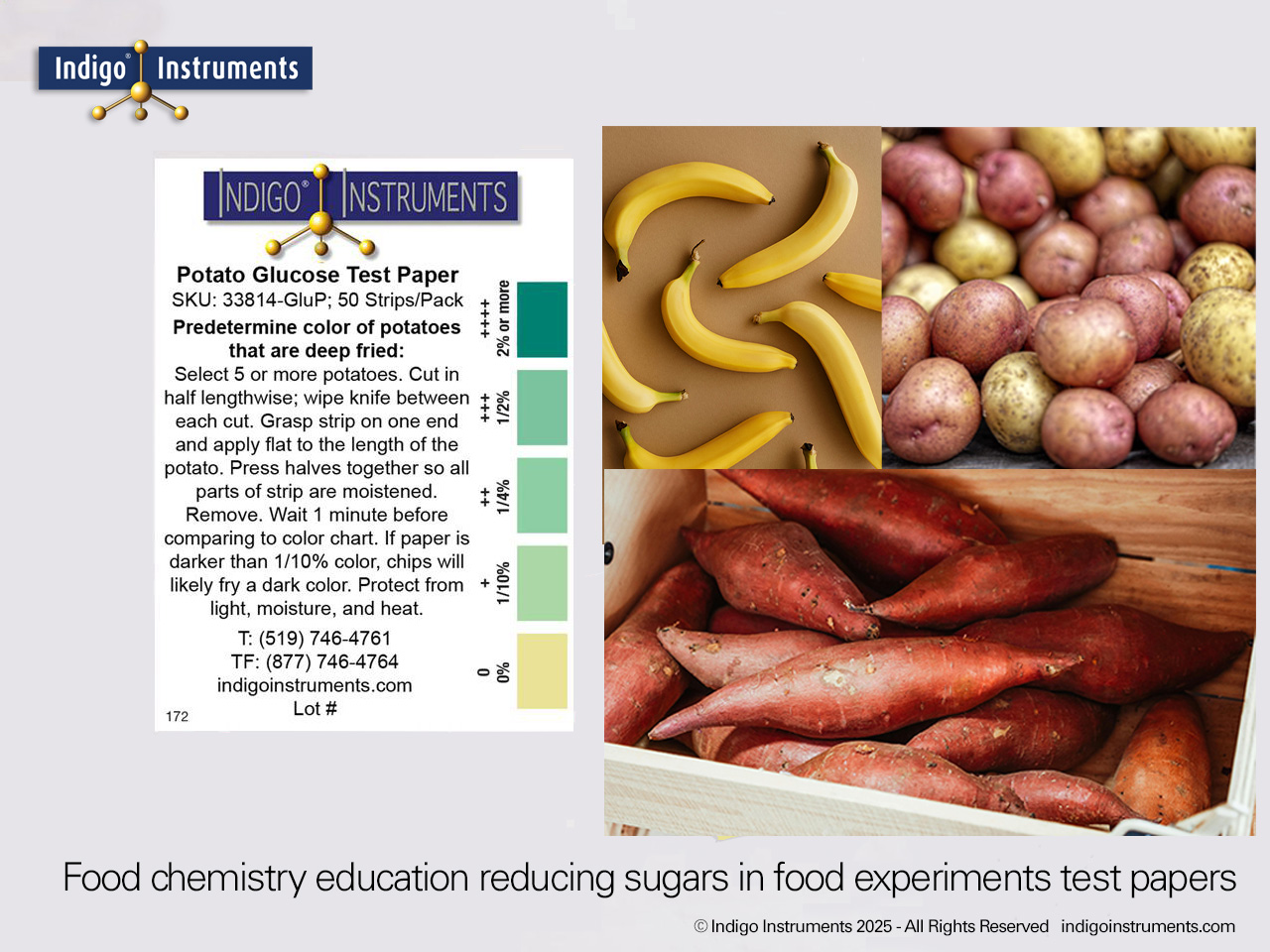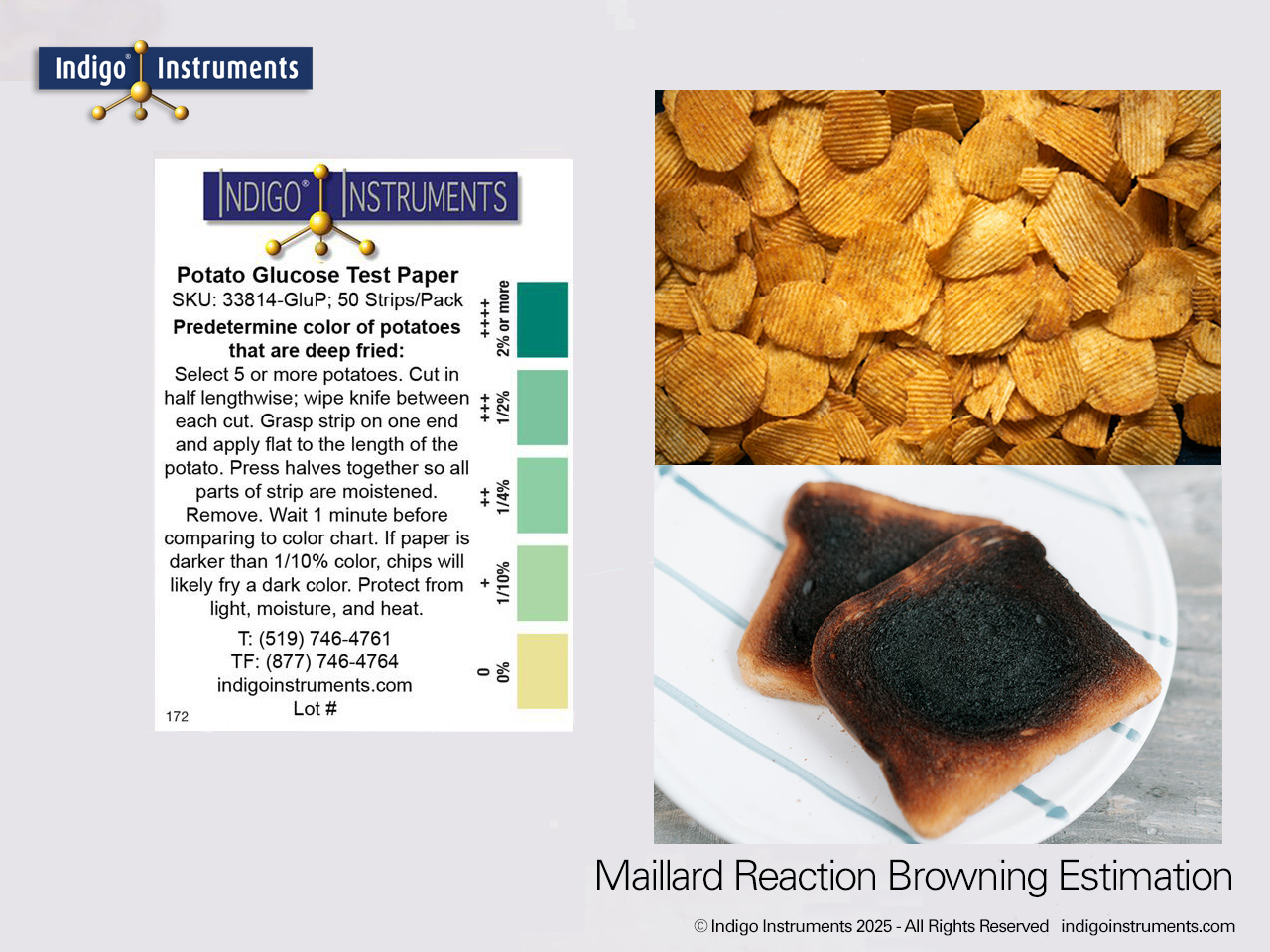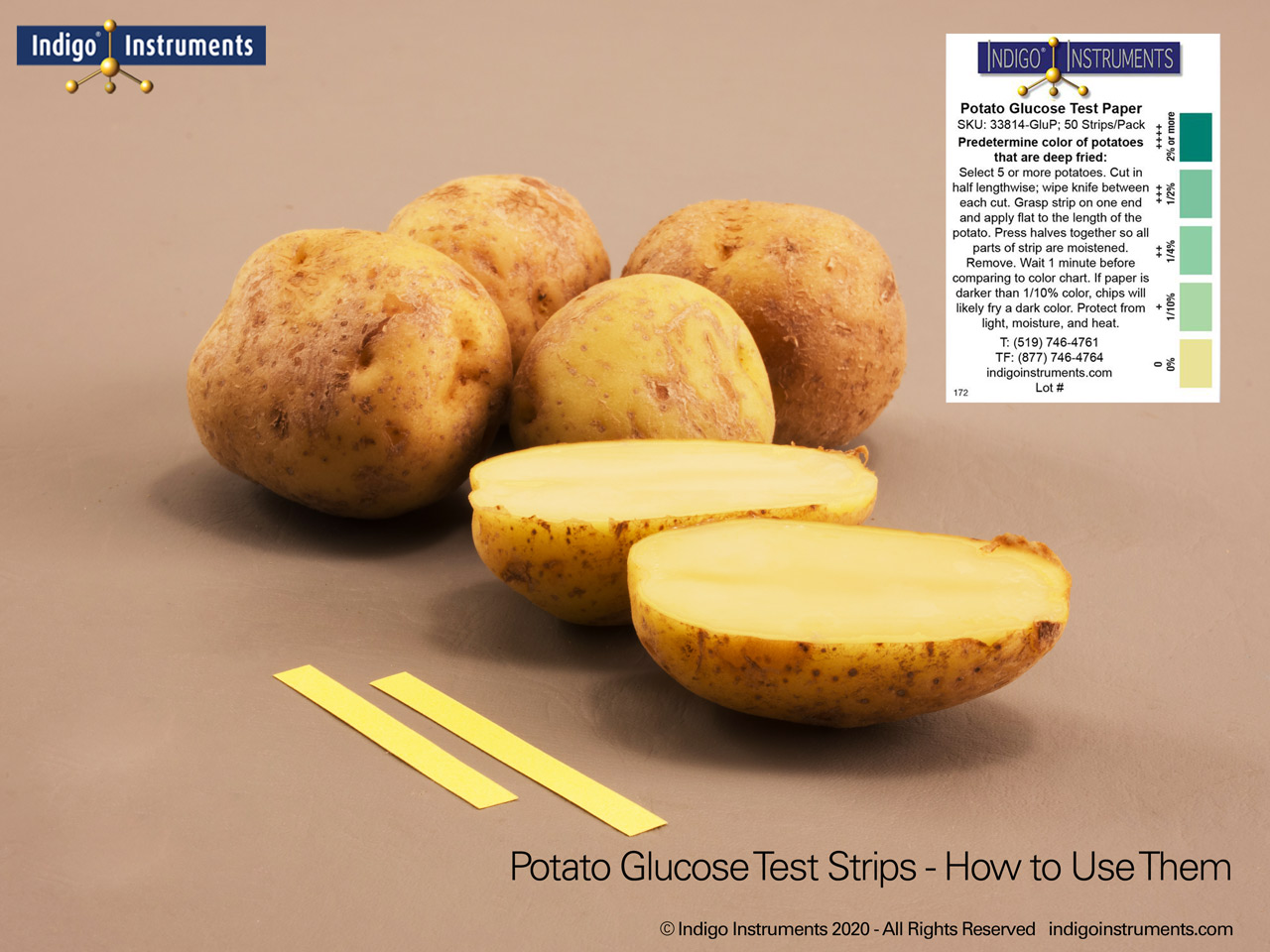Glucose Reducing Sugar Content Test Papers
SKU: 33814-GluP
Measure reducing sugar levels in potatoes and other foods to study Maillard reactions and browning with Indigo® potato glucose test papers. They are ideal for food chemistry, nutrition, & culinary science labs.
Measure reducing sugar levels in potatoes and other foods to study Maillard reactions & browning with Indigo® potato glucose test paper. Designed for food chemistry, nutrition, and culinary science labs, this simple visual test helps students and researchers explore the chemical basis of flavor and color development. These test papers detect reducing sugar concentrations, primarily glucose, in potatoes and other starchy foods. The reagent system changes color according to glucose level, allowing rapid assessment of how storage, temperature, and variety influence browning during cooking or frying.
The paper uses an enzyme-coupled colorimetric reaction specific to glucose. Glucose oxidase converts glucose to gluconic acid and hydrogen peroxide. Peroxidase then catalyzes oxidation of a chromogenic substrate, producing a visible color. The intensity of the resulting green-to-brown shade correlates with glucose concentration. This test demonstrates enzymatic specificity, redox chemistry, and the role of glucose as a reducing sugar, making it ideal for food chemistry demonstrations, laboratory exercises, and process control in frying or baking industries.




